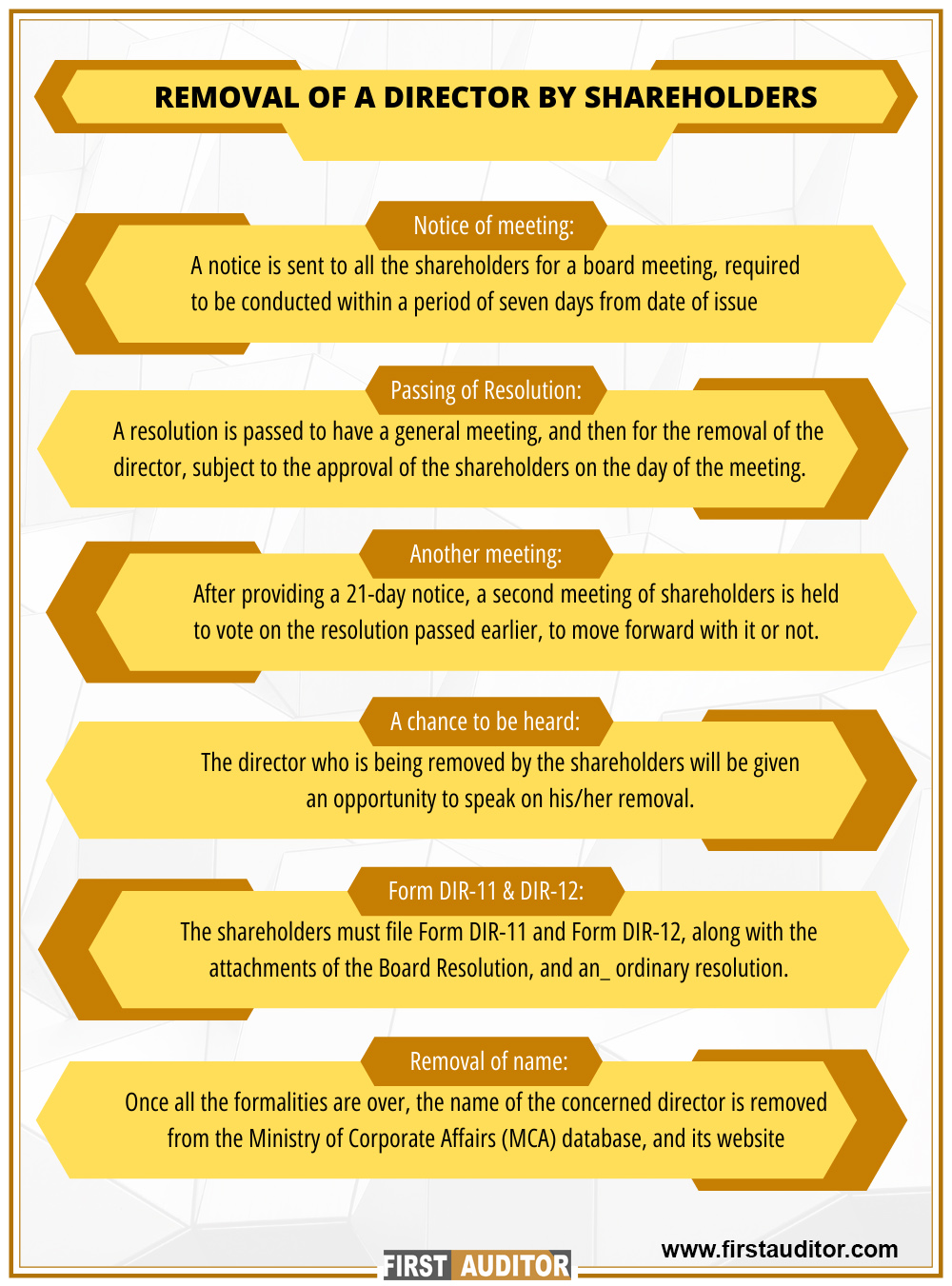A public corporation must have a minimum of three directors, whereas every private firm should have at least two. If a director commits any of the Act's specified disqualifications, misses more than 12 months of board meetings, violates Section 184's provisions, is disqualified by a court or tribunal order, or is found guilty of a crime and given a sentence of at least six months in prison, the company may remove the director from office.A director must be removed from a corporation if they have not followed the rules and regulations outlined in the Companies Act of 2013 or have voluntarily left their position.

Let's examine the steps for removing a director in three distinct situations.A director is dismissed by the shareholders:
A notice of a board meeting is delivered to all shareholders, and it must be held within seven days of the date of the notice.
A resolution is approved to call a general meeting and then to remove the director, subject to the consent of the shareholders present on the day of the meeting.
After giving shareholders 21 days' notice, a second shareholder meeting is held to vote on whether or not to implement the resolution adopted at the first meeting.
The director whose removal the shareholders have approved will have a chance to comment.
After the necessary procedures are completed, the name of the concerned director is erased from the Ministry of Corporate Affairs (MCA) database and its website.
To remove a director, a special resolution must be passed at a general meeting, followed by filing Form DIR-12 with the Registrar of Companies.
Documents required include the notice of the meeting, the resolution passed, and the director's consent for removal.
Yes, a director can challenge their removal in a court of law if they believe the process was not followed correctly.
A removed director has the right to receive a copy of the meeting minutes and to seek legal recourse if necessary.
The company must update its records and notify the Registrar of Companies by filing the necessary forms.